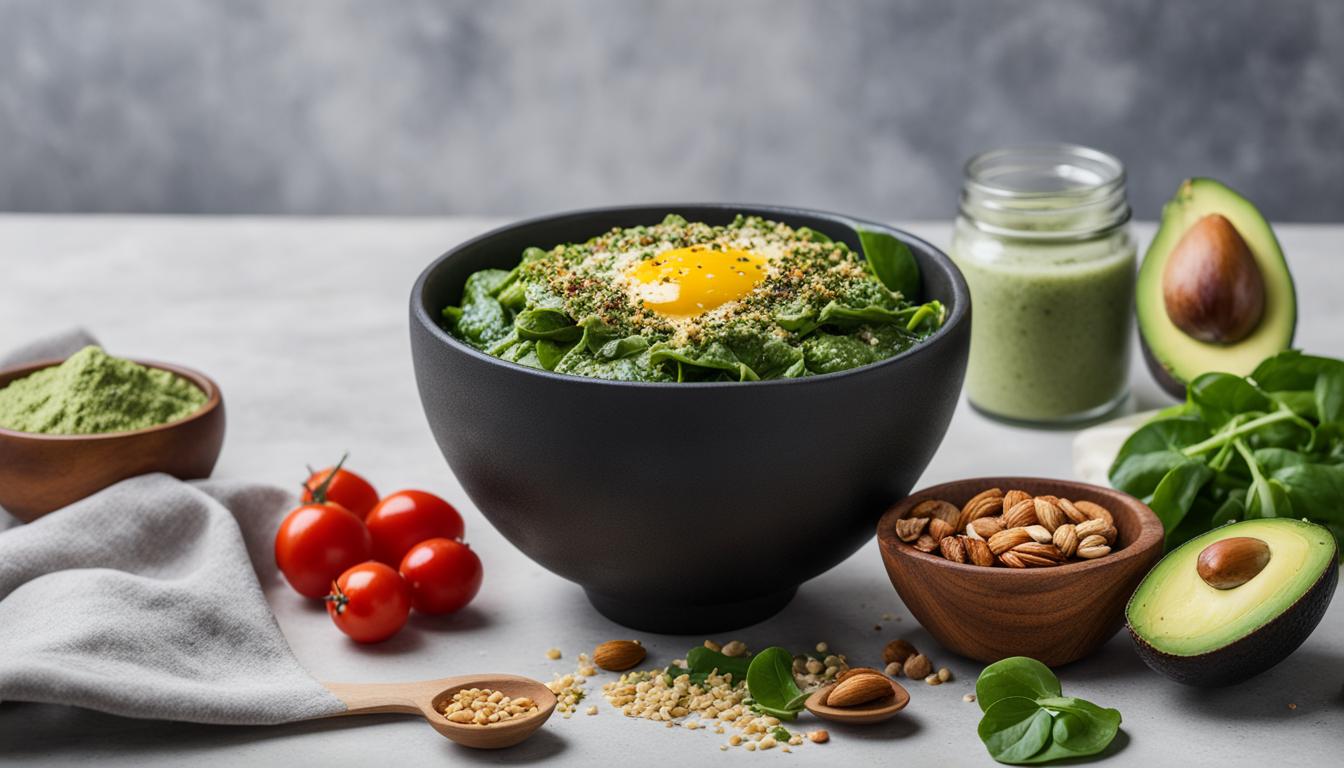Discover the Secret to Keto Success with Soy Sauce: How to Manage Carbs and Enhance Flavor in Your Keto Meals!
Discover the Secret to Keto Success with Soy Sauce: How to Manage Carbs and Enhance Flavor in Your Keto Meals!
Welcome to the exciting world of the ketogenic diet, where you can transform your health and wellness by making mindful food choices. The keto diet is all about consuming low-carb, moderate-protein, and high-fat foods to achieve ketosis – a metabolic state where your body uses fat for energy instead of carbohydrates. It’s a lifestyle that’s not just about weight loss, but also about improving focus, energy levels, and overall well-being.
One of the common challenges people face when starting the keto diet is finding ways to add flavor to their meals without compromising their carb intake. This is where versatile condiments like soy sauce come into play. Soy sauce is a staple in many keto recipes, adding depth and savory richness to dishes, all while being low in carbs. Let’s dive into the world of soy sauce, its carb content, and how you can effectively incorporate it into your keto meal plans to elevate both the flavor and nutritional value of your dishes.

Carbohydrates in Soy Sauce
When it comes to the ketogenic diet, managing carbohydrate intake is crucial. Soy sauce, a staple in many Asian-inspired dishes, is a flavorful addition to your keto meals. But how does it fare in terms of carbohydrates?
Traditional soy sauce contains around 1 gram of carbohydrates per tablespoon. While this may not seem like much, it can add up, especially for those who enjoy soy sauce in generous amounts. However, if you’re looking to minimize your carb intake, you may want to consider low-carb alternatives like tamari.
Tamari, a Japanese soy sauce, is often made with little to no wheat, resulting in a lower carbohydrate content. It typically contains less than 1 gram of carbohydrates per tablespoon, making it a favorable option for keto enthusiasts. When using soy sauce or tamari in your keto cooking, be mindful of portion sizes to keep your carb count in check while still enhancing the flavor of your dishes.

Impact of Soy Sauce on Keto Diet
When it comes to the ketogenic diet, watching your carb intake is crucial. So, is soy sauce completely off-limits due to its carb content? Not necessarily! A typical serving of soy sauce contains around 1 gram of carbs. While it’s not carb-free, the amount is small enough to fit into a keto diet if used in moderation.
Portion control is key here. Be mindful of the amount you use, and consider opting for low-carb or tamari soy sauce, which has an even lower carbohydrate content. Additionally, try incorporating other flavor-boosting ingredients like garlic, ginger, or vinegar to reduce the need for excessive soy sauce.
By being conscious of your portions and choosing low-carb options, you can still enjoy the umami-rich flavor of soy sauce while staying within your keto carb limits.

Benefits of Using Soy Sauce in Keto Cooking
When it comes to elevating the flavors in your keto meals, soy sauce is a game-changer. Not only does it add a delicious umami taste to your dishes, but it also brings about a whole new dimension of variety to your meal options.
One of the benefits of using soy sauce in keto recipes is the flavor enhancement it offers. According to a study published in the Journal of Food Science, the unique combination of amino acids, sugars, and organic acids in soy sauce contributes to its rich and complex flavor profile, making it an ideal ingredient to enhance the taste of your low-carb meals.
Furthermore, soy sauce can be a delicious and versatile addition to your keto cooking. Whether you’re whipping up a stir-fry, marinating meats, or creating a savory dipping sauce, soy sauce provides endless opportunities to explore new flavors without compromising your low-carb lifestyle.
With just 1 gram of carbs per tablespoon, using soy sauce in your keto recipes not only adds depth and variety to your meals but also fits seamlessly into your carb-conscious eating plan.

Best Practices for Incorporating Soy Sauce in Keto Meals
When following a keto diet, incorporating soy sauce into your meals can be a fantastic way to enhance flavor without adding extra carbs. Soy sauce is low in carbohydrates and can be a great addition to your keto-friendly dishes.
Here are a few tips on how to effectively use soy sauce in your keto cooking:
1. Choose the Right Type of Soy Sauce
Opt for low-sodium or gluten-free soy sauce to keep your carb count in check. Low-sodium soy sauce contains less salt, making it a healthier option, while gluten-free variations are suitable for those with gluten sensitivities.
2. Use it as a Marinade
Marinating meats or tofu in soy sauce can infuse them with rich umami flavor, adding depth to your dishes without compromising your keto goals.
3. Incorporate it in Stir-Fries
Stir-fries are a staple in keto cooking, and soy sauce can take these dishes to the next level. Pair it with lean meats, low-carb vegetables, and a dash of sesame oil for a scrumptious keto-friendly meal.
Try this simple recipe to get you started: Keto-friendly Chicken Stir Fry
Ingredients:
- 2 tablespoons soy sauce
- 1 pound chicken breast, sliced
- 1 cup broccoli florets
- 1/2 cup sliced bell peppers
- 2 cloves garlic, minced
- 1 tablespoon sesame oil
- Salt and pepper to taste
Instructions:
- Marinate the chicken in soy sauce for 30 minutes.
- Heat sesame oil in a pan and sauté garlic until fragrant.
- Add the marinated chicken and cook until no longer pink.
- Toss in the broccoli and bell peppers, and stir until tender-crisp.
- Season with salt and pepper.
- Serve hot and enjoy!
By following these tips and experimenting with soy sauce in your keto-friendly meals, you can elevate the flavors of your dishes while staying within your carb limits.
Potential Risks of Consuming Soy Sauce on Keto
While soy sauce can be a great addition to your keto meals, it’s important to be mindful of certain risks and drawbacks, especially when it comes to managing carb intake.
One significant consideration is the high sodium content in soy sauce. A standard tablespoon of soy sauce contains about 879 milligrams of sodium, which can contribute to exceeding the daily recommended intake for individuals following a keto diet. Excessive sodium consumption can lead to issues like high blood pressure and water retention, so moderation is key.
Another aspect to be cautious about when using soy sauce is the potential allergens it contains. Soy is a common allergen, and individuals with soy allergies need to be vigilant when incorporating soy sauce into their keto meals.
It’s essential to check product labels and consider lower-sodium options or alternative seasonings to manage sodium intake effectively while enjoying the flavor-enhancing benefits of soy sauce on a keto diet.
Conclusion
So, there you have it! Soy sauce can be a fantastic addition to your keto journey, adding flavor and depth to your meals. Remember, it’s all about mindful consumption and moderation. With its low carb content and umami flavor, soy sauce can be a valuable ally in your quest for keto success.
Research has shown that incorporating soy sauce into your keto meal plan can help manage carb intake while enhancing the overall taste experience. Just a little drizzle or dash can go a long way in transforming the ordinary into the extraordinary.
By being aware of the carb content in soy sauce and using it judiciously, you can create delicious keto-friendly dishes without going overboard on carb consumption. So, go ahead, enjoy your soy sauce in moderation, and savor the flavorful benefits it brings to your keto lifestyle!


